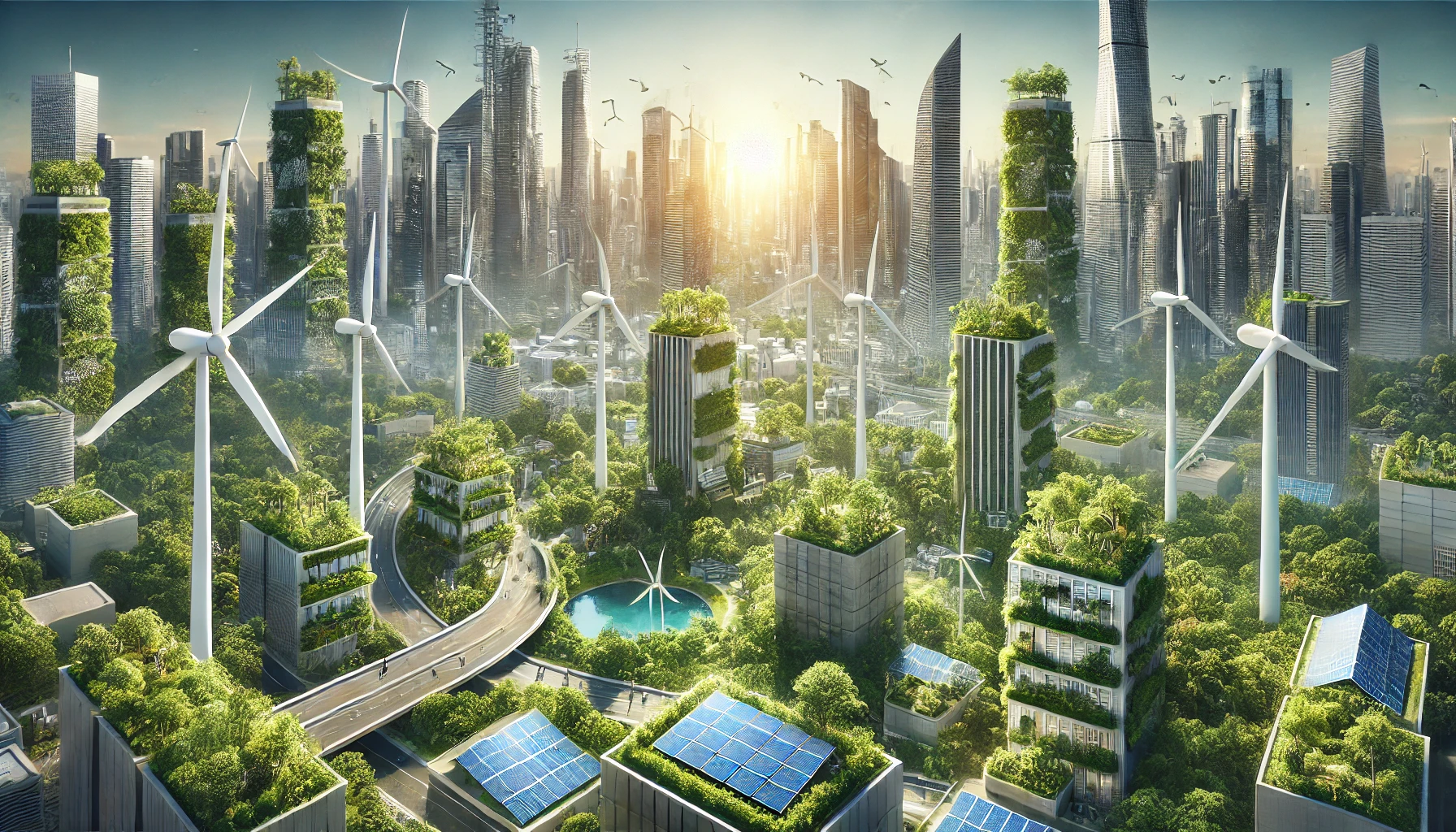Top 10 Game-Changing Green Technologies Revolutionizing 2024
Introduction
In 2024, green technology continues to evolve, addressing global environmental challenges and paving the way for a sustainable future. From renewable energy advancements to innovative waste management solutions, green tech is becoming an integral part of industries worldwide. Here, we delve into the top 10 transformative green technologies revolutionizing 2024 and their potential impact on our planet.
1. Next-Generation Solar Panels
Keywords: high-efficiency solar panels, flexible solar tech, solar innovations 2024
Solar technology has seen remarkable advancements, introducing high-efficiency solar panels capable of capturing more energy even in low-light conditions. Flexible solar panels, which can be integrated into unconventional surfaces like clothing or building windows, are broadening the applications of solar energy. Companies are also exploring solar panel recycling methods to reduce waste and make the technology more sustainable.
Key Highlights:
- Increased Efficiency: New materials, such as perovskite cells, significantly boost energy conversion rates.
- Innovative Designs: Flexible and transparent panels enable diverse applications, including urban infrastructure and wearable devices.
- Sustainability: Recycling initiatives for old panels minimize waste and resource depletion.
2. Vertical-Axis Wind Turbines
Keywords: urban wind turbines, efficient wind energy, compact wind power solutions
Vertical-axis wind turbines are gaining attention for their ability to generate renewable energy in urban and small-scale environments. Unlike traditional wind turbines, these compact designs are efficient and quiet, making them suitable for residential and urban settings.
Key Highlights:
- Space-Saving Designs: Ideal for rooftops and urban areas with limited space.
- Low Noise Levels: Suitable for use in residential communities without causing disruptions.
- Energy Access: Enables localized energy production, reducing dependency on centralized grids.
3. Green Hydrogen Technology
Keywords: renewable hydrogen, hydrogen fuel advancements, green energy carriers
Green hydrogen, produced through electrolysis powered by renewable energy, is emerging as a clean alternative to fossil fuels. This technology is essential for decarbonizing hard-to-abate sectors such as heavy industries and long-haul transportation.
Key Highlights:
- Scalable Solutions: New technologies are lowering the cost of green hydrogen production.
- Versatility: Can be used as fuel for vehicles, industrial processes, and power generation.
- Carbon Neutral: Produces zero emissions when burned or converted into energy.
4. Advanced Carbon Capture and Storage (CCS)
Keywords: carbon capture technologies, CCS innovation, reducing CO2 emissions
Carbon Capture and Storage (CCS) technologies are designed to capture CO2 emissions from industrial and energy-related sources and store them underground. These systems are critical for mitigating the environmental impact of industries while transitioning to renewable energy sources.
Key Highlights:
- Increased Efficiency: Advanced methods capture higher percentages of emissions.
- Diverse Applications: CCS is being used in power plants, manufacturing, and chemical processing.
- Global Impact: Potential to significantly reduce global CO2 levels.
5. AI-Powered Smart Grids
Keywords: smart energy grids, AI-driven energy solutions, energy efficiency technology
AI-powered smart grids are revolutionizing how electricity is generated, distributed, and consumed. These intelligent systems integrate renewable energy sources and optimize energy usage through predictive analytics.
Key Highlights:
- Demand Prediction: AI tools forecast energy needs, preventing overproduction and waste.
- Renewable Integration: Seamlessly incorporates solar, wind, and other green energy sources.
- Consumer Benefits: Reduces electricity costs and improves energy reliability.
6. Circular Economy Innovations
Keywords: zero-waste technologies, sustainable manufacturing, circular economy solutions
The circular economy is a model that emphasizes reducing waste and reusing resources. Technologies like advanced recycling systems and biodegradable materials are essential for achieving sustainability goals.
Key Highlights:
- Recycling Advances: Automated systems sort and process materials more efficiently.
- Biodegradable Alternatives: New materials reduce reliance on single-use plastics.
- Economic Benefits: Encourages resource optimization and cost savings.
7. Electric and Autonomous Vehicles (EVs)
Keywords: autonomous green vehicles, sustainable transportation tech, EV advancements
The electric vehicle (EV) industry is experiencing rapid growth, with innovations in battery technology and autonomous driving systems. These advancements are making EVs more accessible, affordable, and eco-friendly.
Key Highlights:
- Longer Ranges: Enhanced batteries offer extended mileage per charge.
- Autonomous Features: AI-driven systems improve safety and efficiency.
- Eco-Friendly Manufacturing: EV production is incorporating sustainable practices.
8. Smart Water Management Systems
Keywords: sustainable water tech, water conservation solutions, smart irrigation systems
Water management technologies are addressing global water scarcity by optimizing usage and reducing waste. From AI-powered irrigation to leak detection systems, these innovations are transforming water conservation efforts.
Key Highlights:
- Precision Irrigation: Ensures crops receive the right amount of water at the right time.
- Leak Detection: Identifies and repairs water leaks efficiently.
- Urban Applications: Smart meters and sensors optimize water usage in cities.
9. Vertical Farming and Urban Agriculture
Keywords: indoor farming tech, urban agriculture solutions, sustainable food production
Vertical farming technologies are revolutionizing agriculture by enabling food production in urban environments. These systems use minimal space and resources, making them ideal for cities.
Key Highlights:
- Space Efficiency: Produces more food per square meter than traditional farming.
- Water Savings: Uses up to 90% less water compared to conventional agriculture.
- Year-Round Production: Controlled environments allow consistent yields regardless of weather.
10. Bio-Based Plastics and Materials
Keywords: eco-friendly plastics, sustainable packaging, biodegradable materials
Bio-based plastics are made from renewable resources like corn, sugarcane, and algae, offering an alternative to petroleum-based products. These materials are critical for reducing plastic pollution.
Key Highlights:
- Eco-Friendly Options: Bioplastics degrade faster and have lower environmental impact.
- Innovative Packaging: Companies are adopting sustainable alternatives for consumer products.
- Versatility: Suitable for applications ranging from packaging to medical devices.
Conclusion
Green technologies are shaping a sustainable future, offering solutions to some of the world’s most pressing environmental challenges. By embracing these innovations, industries and individuals alike can contribute to a cleaner, greener planet. Stay tuned to our blog for more updates on groundbreaking advancements in green technology.
Recommended Books:
- “Drawdown: The Most Comprehensive Plan Ever Proposed to Reverse Global Warming” by Paul Hawken
- “How to Avoid a Climate Disaster“ by Bill Gates
- “The Green Collar Economy: How One Solution Can Fix Our Two Biggest Problems” by Van Jones
- “The Future We Choose: Surviving the Climate Crisis” by Christiana Figueres and Tom Rivett-Carnac
___________________________________________________________________________________________________
Please don’t forget to leave a review.
on Techcyclohub








